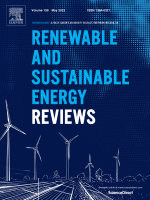A novel modelling toolkit for unpacking the Water-Energy-Food-Environment (WEFE) nexus of agricultural development
| Year | : | 2022 |
|---|---|---|
| Author/s | : | M.E. Correa-Cano, G. Salmoral, D. Rey, J.W. Knox, A. Graves, O. Melo, W. Foster, L. Naranjo, Eduardo Zegarra, C. Johnson, O. Viteri-Salazar, X. Yan |
| Area/s | : | Natural resources, extractive industries and social conflict |
Correa-Canoa, M. E., Salmoral, G., Rey, D., Knox, J. W., Graves, A., Melo, O., Foster, W., Naranjo, L., Zegarra, E., Johnson, C., Viteri-Salazar, O. y Yan X. (2022). A novel modelling toolkit for unpacking the Water-Energy-Food-Environment (WEFE) nexus of agricultural development. Renewable and Sustainable Energy Reviews, 159, 112182. https://doi.org/10.1016/j.rser.2022.112182
Increasing food demand has led to significant agricultural expansion globally with negative impacts on resources and the environment, a perfect manifestation of the Water-Energy-Food-Environment nexus. Whilst many tools have been developed to understand the complexity of the Water-Energy-Food-Environment nexus most have failed to explicitly consider biophysical and socio-economic aspects simultaneously. A novel Water-Energy-Food-Environment modelling toolkit is developed that integrates both these components by combining different modelling approaches including irrigation simulation, economic modelling and life cycle environmental assessment. The toolkit is demonstrated using two major agro-export crops (asparagus and table grapes) in the Ica Valley, Peru, a severely water-stressed region. The toolkit was able to provide novel insights into the implications of different farming practices on resource efficiency at the field level in relation to water and energy, under contrasting future scenarios reflecting socio-economic outcomes at the local to regional levels (e.g., food prices, employment, and income) as well as environmental impacts at local to global scales. This information enables different stakeholders to better understand the interlinkages and inter-dependences between the Water-Energy-Food-Environment nexus elements and the complex impacts of agricultural expansion beyond the immediate sector and its geographical extent, helping decision makers design more coordinated agricultural policies and support sustainable agricultural transformation.







